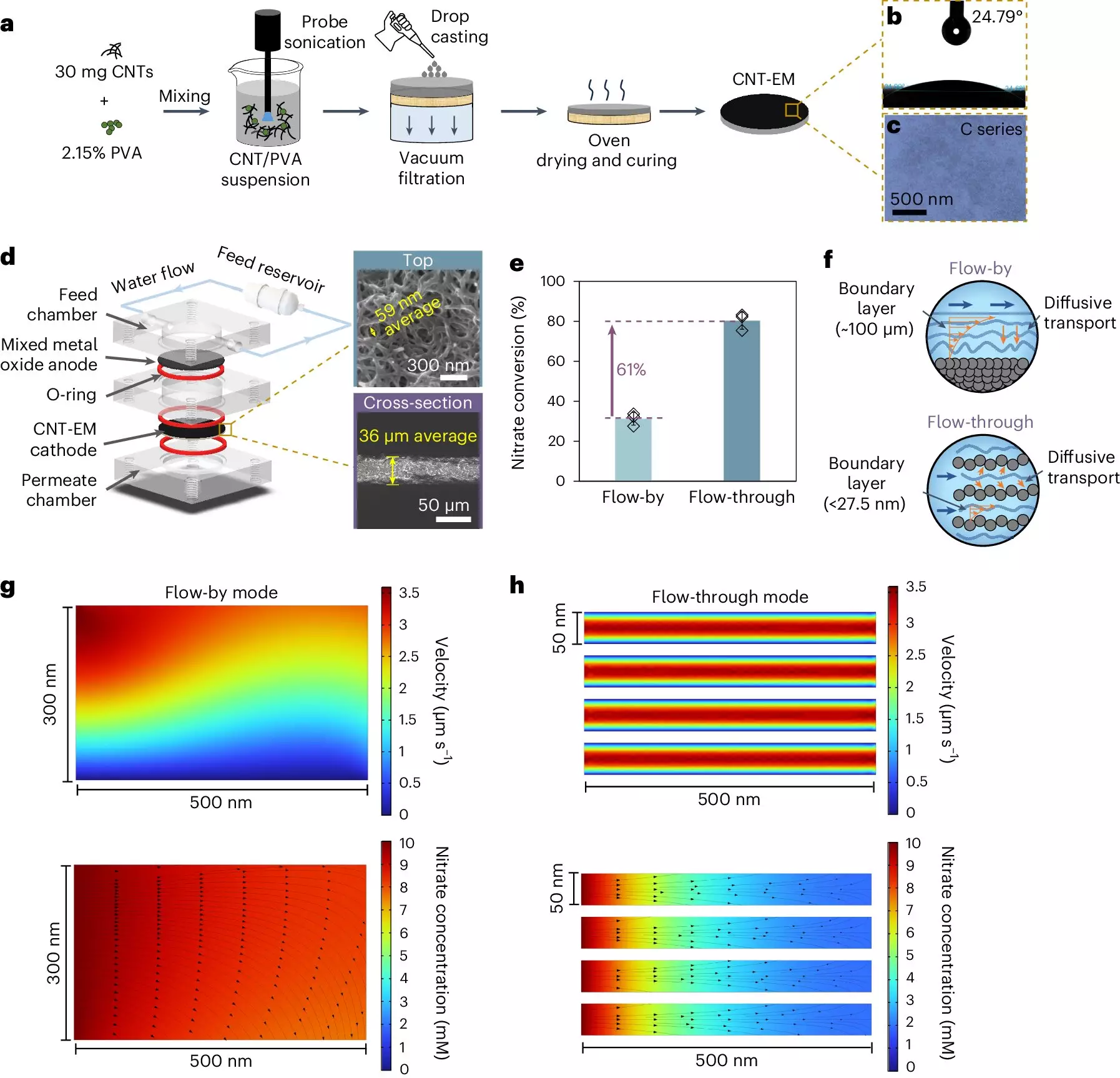Water contamination poses significant risks to both human health and the environment, with nitrate contamination being particularly concerning. High levels of nitrates in drinking water can lead to various health problems, including methemoglobinemia, or “blue baby syndrome,” which affects infants and reduces the blood’s ability to carry oxygen. Traditional methods of dealing with nitrate pollution have primarily focused on separation and destruction, but these techniques often come with their own sets of challenges. Recent developments at Yale University reveal an innovative alternative, employing electrified membranes made from carbon nanotubes, which could ultimately revolutionize how we approach the filtration of water.
Nitrate Removal Strategies: A Dichotomy
Currently, the two main strategies for tackling nitrate in water are separation and destruction. While separating nitrate can remove it from the water, this method leaves behind a concentrated waste stream, creating a cycle that returns the contaminants back into the environment. Destruction, on the other hand, fully eliminates the nitrates, but incumbent biological methods used in wastewater treatment, such as denitrification, are slow and overly sensitive to environmental fluctuations. The inherent challenges of these two approaches highlight an urgent need for more efficient solutions.
Electrocatalytic Processes: The Race for Speed
Enter electrocatalytic processes—cutting-edge methods that enhance the speed and efficacy of nitrate removal. These processes bypass the inefficiencies of biological methods by utilizing electrical energy to drive chemical reactions that dismantle nitrates effectively. Despite their promise, traditional electrocatalytic systems have limitations due to the flat, two-dimensional electrodes in use. The inefficiency arises from the boundary layer in those systems—the layer of liquid near the electrode surface—being large enough to slow down the nitrate’s transport and reaction significantly.
A Paradigm Shift: Electrified Membranes
Lea Winter’s pioneering approach, focused on electrified membranes, pivots away from conventional technologies. By employing membranes made from carbon nanotubes, her work introduces a new paradigm in nitrate removal. The innovation lies in the membrane’s minuscule pore size—50 nanometers compared to the much larger boundary layer in traditional systems—allowing for much faster movement of nitrate towards the electrode. This astounding enhancement in nitrate transport facilitates rapid reactions, overcoming one of the core challenges faced by earlier technologies.
Efficiency Redefined
The implications of Winter’s research are not merely academic; they represent a potential breakthrough in how we manage nitrate pollution. Traditional electrochemical methods typically require hours to achieve significant nitrate conversion rates—often 80% or 90% removal of nitrates. In startling contrast, Winter’s membranes boast a remarkable efficiency that can accomplish similar results within a mere 15 seconds. This leap in speed could have substantial ramifications for water treatment processes, simplifying operations and potentially lowering costs.
Real-World Application: Testing the Waters
To further explore the viability of this game-changing technology, Winter’s team conducted practical tests with samples from Lake Wintergreen, selecting these waters due to their real-world representation of contamination levels. By introducing controlled nitrate concentrations reminiscent of those found in affected aquatic environments, they sought to assess the membranes’ efficiency in less-than-ideal conditions. Such real-world testing serves to validate the membranes’ performance, pushing the research beyond theoretical confines and into practical application.
Broader Implications for Water Treatment
The development of electrified membranes transcends merely addressing nitrate removal; it opens doors to broader improvements in water treatment methodologies. The absence of metal in these membranes is a crucial aspect, as it reduces potential pollutant interactions that may arise in conventional electrochemical systems. This characteristic not only enhances sustainability but also positions this technology within a broader agenda of environmentally friendly innovations.
A Future Less Contaminated
Ultimately, as water scarcity and pollution issues intensify globally, breakthroughs such as Winter’s electrified membranes stand to reshape our approach to water purification. While there are challenges ahead in scaling and implementing these technologies in various geographic and economic contexts, the promise they hold in accelerating nitrate removal from drinking water cannot be overstated. The work being done at Yale is not just a scientific advancement; it’s a hopeful glimpse into a cleaner, safer, and more sustainable future for global water resources.

